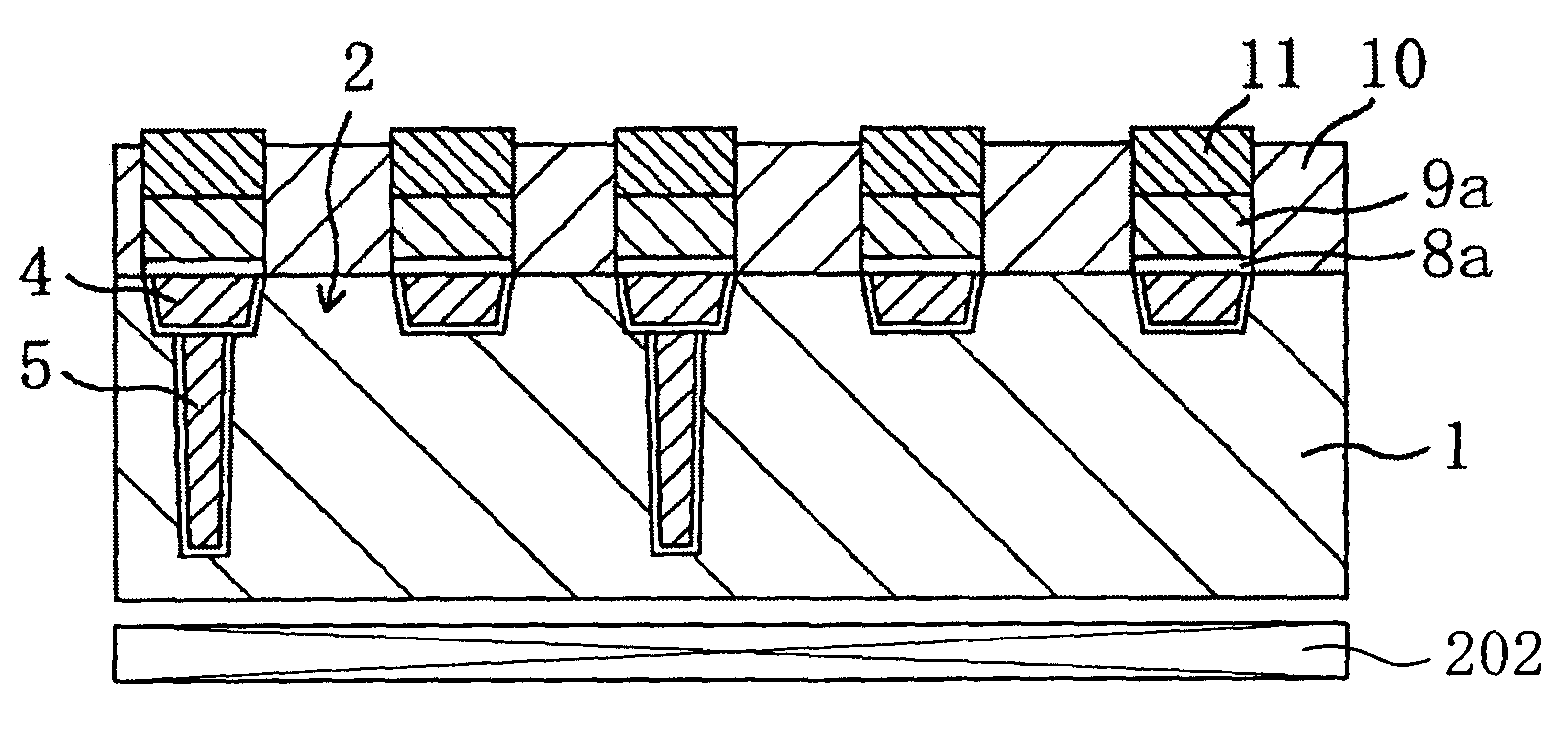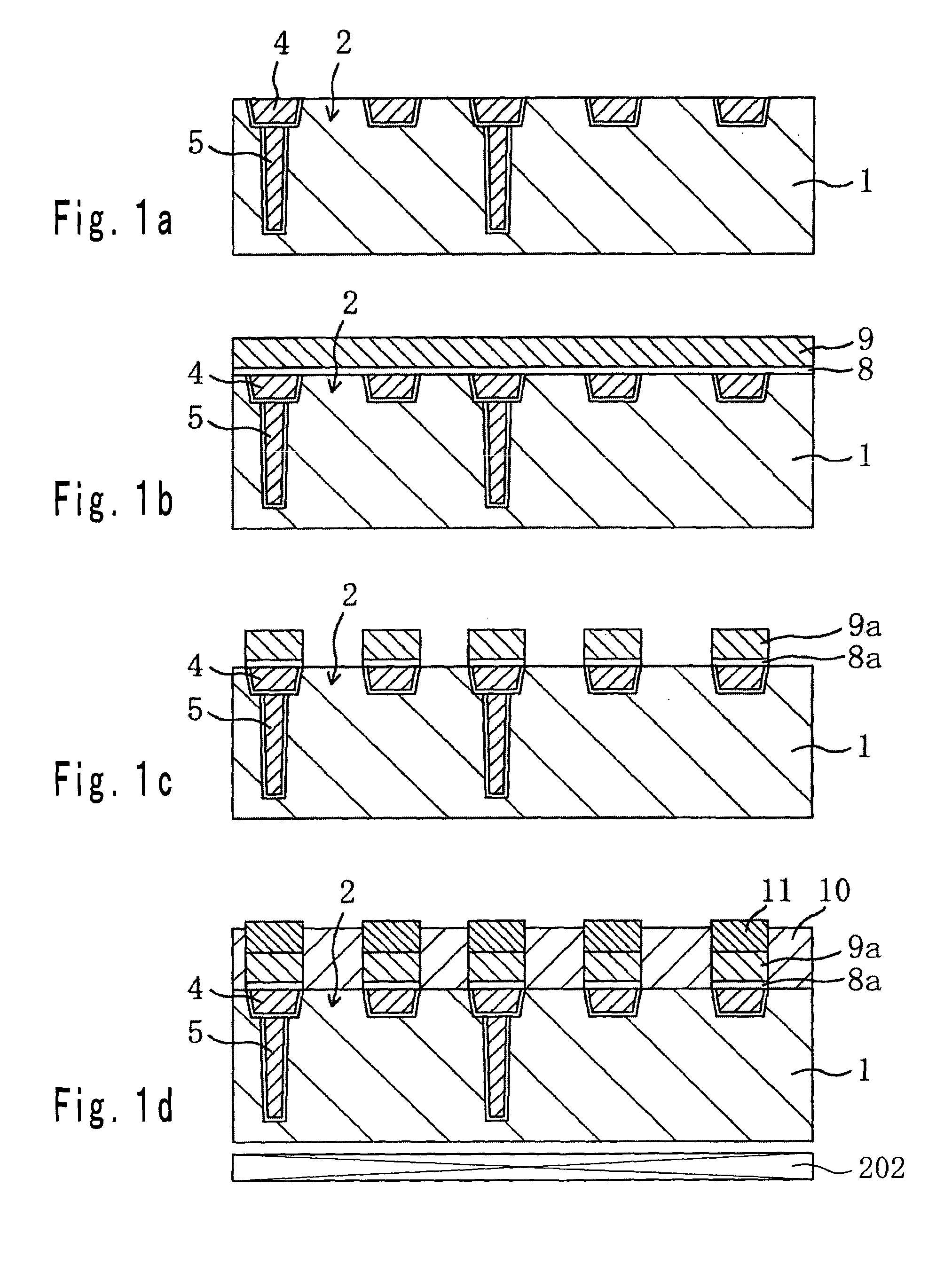Semiconductor device and method of fabricating semiconductor device
a semiconductor and semiconductor technology, applied in the direction of polycrystalline material growth, polycrystalline material growth, chemically reactive gas, etc., can solve the problems of difficult establishment and maintenance, difficult to selectively grow crystals, and inconvenient mass production methods for selective growth of epitaxial growth layers
- Summary
- Abstract
- Description
- Claims
- Application Information
AI Technical Summary
Benefits of technology
Problems solved by technology
Method used
Image
Examples
first embodiment
[0053]FIGS. 1a-1d are sectional views showing a method of fabricating a semiconductor device according to a first embodiment of the present invention.
[0054] The present embodiment exemplifies a case where an SiGe epitaxial growth layer is made to grow on an Si substrate as a method of fabricating a semiconductor device. In the present embodiment, CVD was performed using a cold wall type shown in FIG. 10a. The opening area ratio of an active region 2 (a ratio of a total area of the active region 2 to a surface area of a substrate 1; this is substantially equal to the opening area ratio in a polysilicon layer 9a in the present embodiment) is on the order of 10%. Therefore, in FIGS. 1a-1d, an active region 2 is more exaggerated than a shallow trench isolation 4.
[0055] First, in a step shown in FIG. 1a, in the substrate 1 having the active region 2 made of Si crystal, the shallow trench isolation 4 where silicon oxide film is buried and a deep trench isolation 5 where undoped polysili...
second embodiment
[0073] In a second embodiment of the present invention, an example will be described in which the semiconductor device and the fabrication method thereof according to the first embodiment are applied to a bipolar transistor and a fabrication method thereof. More specifically, a bipolar transistor including an epitaxial growth layer and a polysilicon layer situated around and having a thickness of not less than approximately 50 nm and a fabrication method thereof will be described.
[0074] First of all, referring to FIG. 7b, a structure of the bipolar transistor according to the present embodiment will be described. FIG. 7b is a sectional view showing a structure of the bipolar transistor according to the present embodiment. An upper portion of an Si substrate 21 has a retrograde well 22 containing an n-type impurity such as P. And, the Si substrate 21 is provided with a collector layer 23, a shallow trench isolation 24 and a deep trench isolation 25 which serve as isolations surround...
third embodiment
[0101]FIG. 8 is a sectional view showing a structure of a bipolar transistor according to a third embodiment of the present invention. In FIG. 8, the same reference numerals as those in FIG. 7b denote the same or corresponding parts. It should be noted that a collector layer 23 is more exaggerated than a shallow trench isolation 24 in FIG. 8.
[0102] As shown in FIG. 8, in the third embodiment, the extrinsic base 38 is comprised of the polysilicon layer 29, the poly-SiGe layer 33, and the p+ polysilicon layer 36, whereas, in the present embodiment, the extrinsic base 38 is comprised of the polysilicon layer 29 and the poly-SiGe layer 33. According to the present embodiment, a second deposited oxide film 35 is formed in the step shown in FIG. 4b of the second embodiment. Then, the deposited oxide film 35 is patterned to have a predetermined shape, and an emitter opening portion 34 is formed in the deposited oxide film 35. Subsequently, an n+ polysilicon layer 40 is formed so as to fil...
PUM
 Login to View More
Login to View More Abstract
Description
Claims
Application Information
 Login to View More
Login to View More - R&D
- Intellectual Property
- Life Sciences
- Materials
- Tech Scout
- Unparalleled Data Quality
- Higher Quality Content
- 60% Fewer Hallucinations
Browse by: Latest US Patents, China's latest patents, Technical Efficacy Thesaurus, Application Domain, Technology Topic, Popular Technical Reports.
© 2025 PatSnap. All rights reserved.Legal|Privacy policy|Modern Slavery Act Transparency Statement|Sitemap|About US| Contact US: help@patsnap.com



